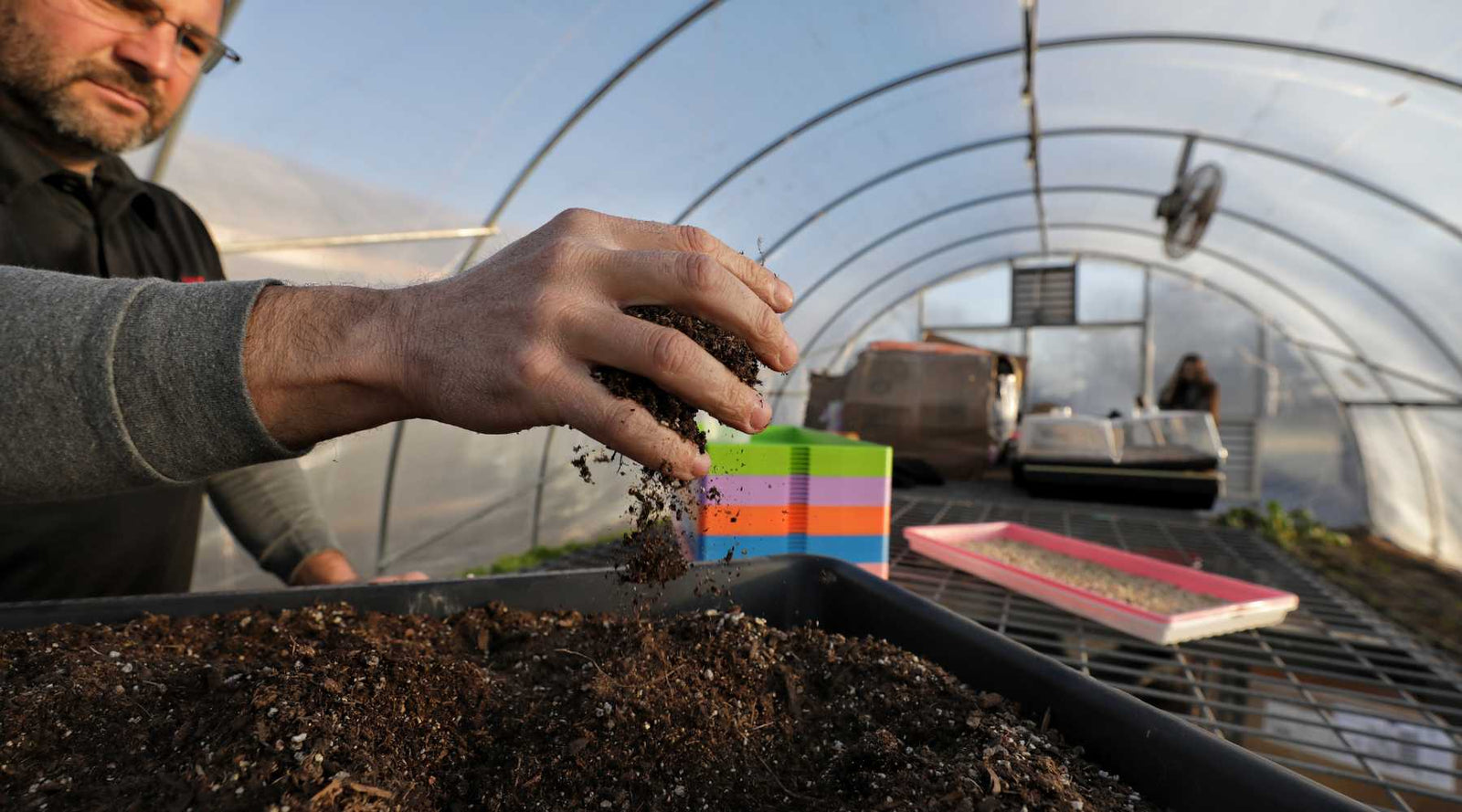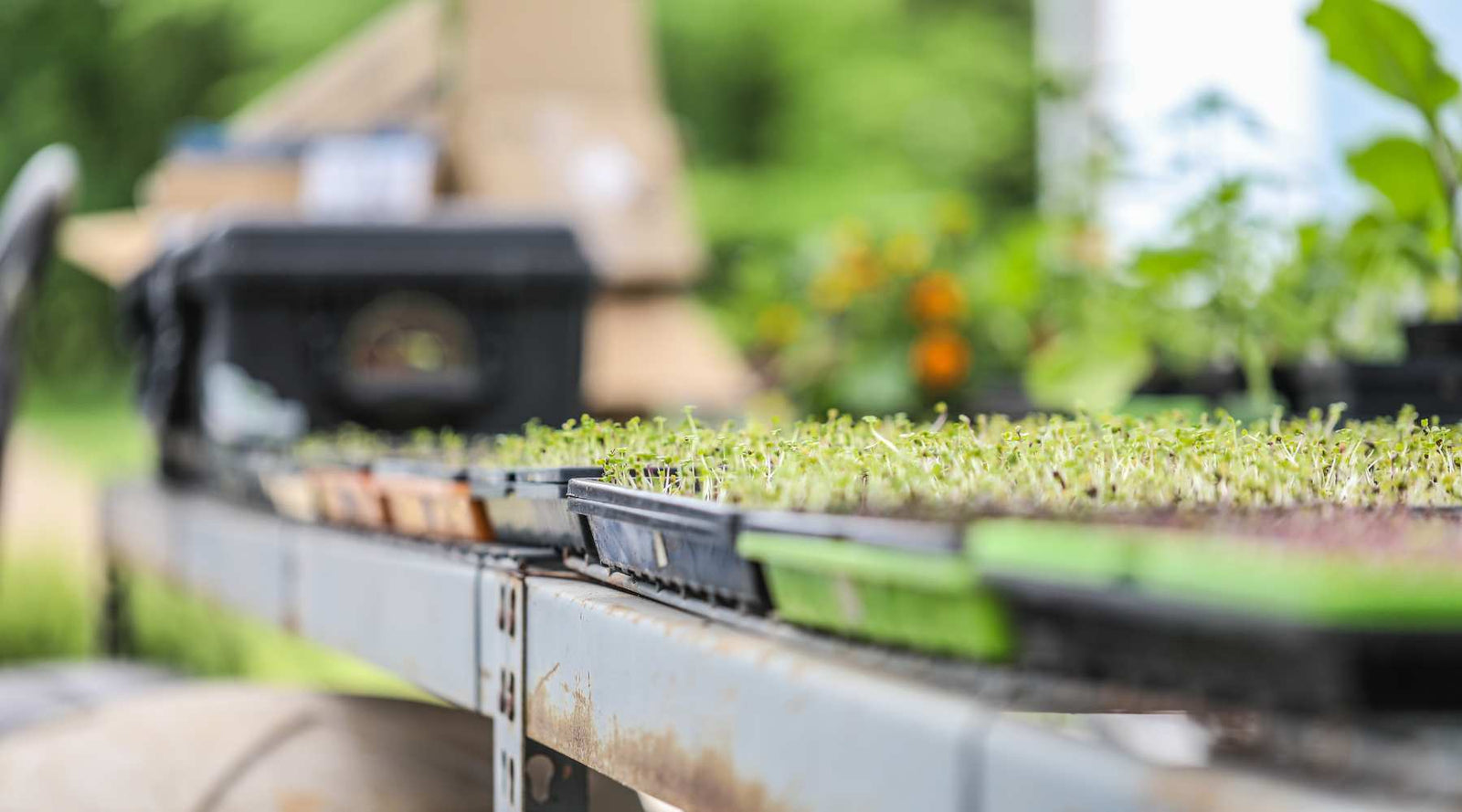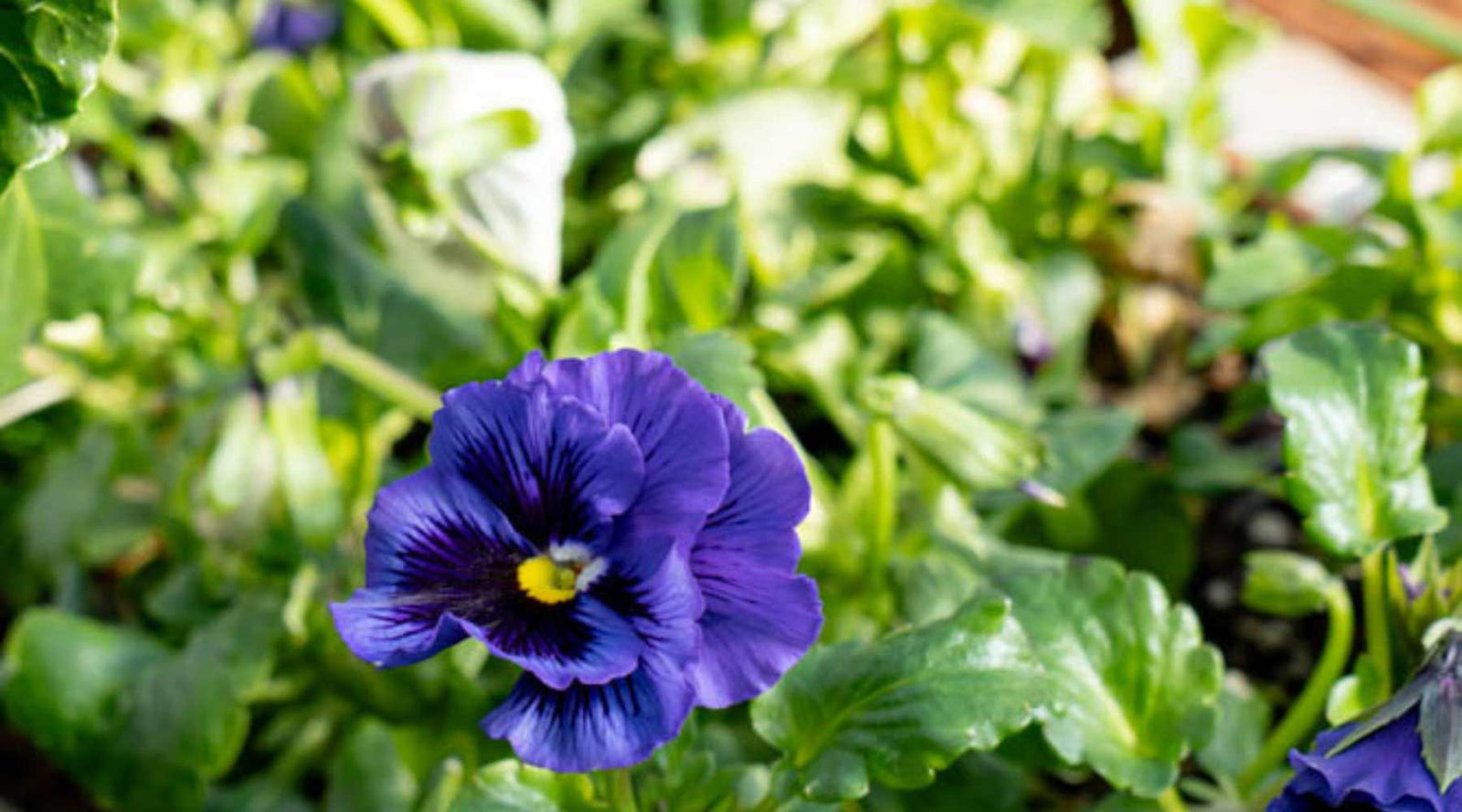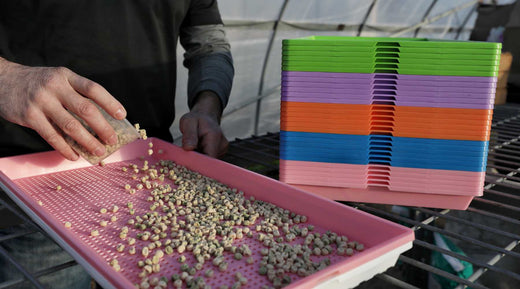Free Shipping on Orders over $75 to the Contiguous US
Free Shipping on Orders over $75 to the Contiguous US
Microgreens and When to Use a Blackout Dome
June 24, 2025 4 min read 0 Comments

USING BLACKOUT DOMES FOR GROWING MICROGREENS
There are a few instances where using a blackout dome for growing microgreens can be very helpful. When growing crops like micro basil that cannot be stacked and benefit from stem stretching, blackout domes make both germination and harvest more manageable. Blackout domes are invaluable when growing specialty crops like popcorn that must be grown in complete darkness.

Do all microgreen crops need a blackout dome for germination?
Not all microgreens benefit from a blackout period. Check out our Ultimate Microgreen Cheat Sheet for details on which crops benefit from blackout periods. A few types of seeds cannot be stacked because the seeds are too small or are mucilaginous and will stick to the tray above if stacked. If you are unfamiliar with Stacking Trays of Microgreens for Germination, this article helps explain the process.
How does a blackout period affect the growth of plants?
In most cases, a lack of light is not good for newly sprouted seeds. When seeds first sprout, they are in search of light and will lengthen their stems to the point of falling over if they cannot find it. The absence of light also delays the beginning of photosynthesis. This lack of light keeps the plant from developing its green color and keeps the texture crisper and less fibrous. The lack of photosynthesis prevents simple sugars from developing into complex carbohydrates. This means that the flavor of microgreens grown in blackout is significantly sweeter.

Using a dome to lengthen stems.
The crops that we recommend using a blackout period for after stacking are those that need a lengthening of the stems that come from the lack of light created. For faster-growing crops like arugula, 2-3 days is enough to get the extra length, making harvesting easier. For slower-growing crops like basil, a blackout time of 4-5 days is needed to get the length to the stems needed to harvest.
Some growers use lengthening of stems to increase the harvestable mass of their greens. While this does increase the weight from a harvested tray, it does little to increase the volume of harvested greens. Since most of the flavor and color of microgreens come from the leaves, this increase in weight does not correspond to an increase in value for most customers.
Using a Blackout Dome to Create New Products
Growing popcorn shoots in complete darkness is the only way to keep them sweet and yellow. Corn shoots as a microgreen are tricky to grow and, as such, can fetch a premium price when grown right. Corn shoots will become bitter and fibrous if exposed to light, even for a few hours.
You can create completely different products with the use of blackout domes. Peas and sunflowers can also be grown under a blackout dome to create a novel microgreen that may interest high-end chefs and those looking to add something original to their plates. Amaranth grown in darkness can be a shocking hot pink color. Since amaranth is prone to mold at the best of times, it is essential to follow proper sanitation practices if you will be trying this.
In the case of peas, sunflowers, and popcorn shoots, the blackout period happens after soaking and stacking. Because reduced airflow can make mold issues more common, it is important to sterilize seeds before planting. You can read Microgreens & Soaking Seeds When and Why to learn more about soaking and sterilization procedures.

Other ways to create a blackout environment
There are a few ways to achieve the darkness needed to lengthen stems and germinate seeds that can’t be stacked. You can use a dedicated blackout dome. The shorter domes that we carry at Bootstrap Farmer are great for saving space when germinating smaller seeds like basil and arugula. For keeping taller crops like peas and sunflower seeds, our 6-inch taller blackout domes are ideal.
If you don’t have a blackout dome, you can use a black 1020 tray flipped upside down to create a similar environment. Another option is to have a dedicated space to keep trays while growing and germinating, from which you can exclude most incoming light. For example, this can be done on one of our automated growing racks by turning off the lights on the bottom shelf.

Are there any drawbacks to using blackout domes?
The main concern when using blackout domes is that limited airflow can create an environment more likely to encourage mold growth. Condensation can build up inside a dome or tray, leading to excessively humid growing conditions. Bootstrap’s blackout domes have included adjustable vents to allow airflow that helps abate this. If you use 1020 deep trays, we recommend propping up a corner to allow air to reach the tray. Just be sure that the airflow you allow is outside of direct light to prevent light from sneaking in with the air.
Want to learn more about growing microgreens? Check out Learn How to Grow Microgreens at Home: A Step-by-Step Guide.
Also in Microgreens Guides & Resources

How to Market Microgreens: Strategies That Get Results
March 27, 2025 13 min read 0 Comments
In this article, we’ll help you stay at the top of your microgreen game to help you succeed in this exciting venture.

Must-Know Tips for Edible Flower Farming Success
October 20, 2025 9 min read 0 Comments
Learn how to expand your markets, what popular edible flowers to offer, marketing tips, new trends, and best practices.

What Lights Do I Need to Grow Microgreens?
January 13, 2025 10 min read 0 Comments
Recent Articles
- How to Market Microgreens: Strategies That Get Results
- Must-Know Tips for Edible Flower Farming Success
- What Lights Do I Need to Grow Microgreens?
- How To Grow Microgreens Indoors - SEED to HARVEST
- A Quick Guide to Starting a Microgreens Business
- How and When to Use 10x10 Microgreen Trays to Grow Nutrient-Packed Greens
- How to Disinfect Seeds Before Planting and Sprouting
- Top 5 Best Growing Mediums for Microgreens
- What Trays Do You Need for Microgreens and Propagation?
- Top Ten Microgreens to Grow
Subscribe
Sign up to get the latest on sales, new releases and more …
